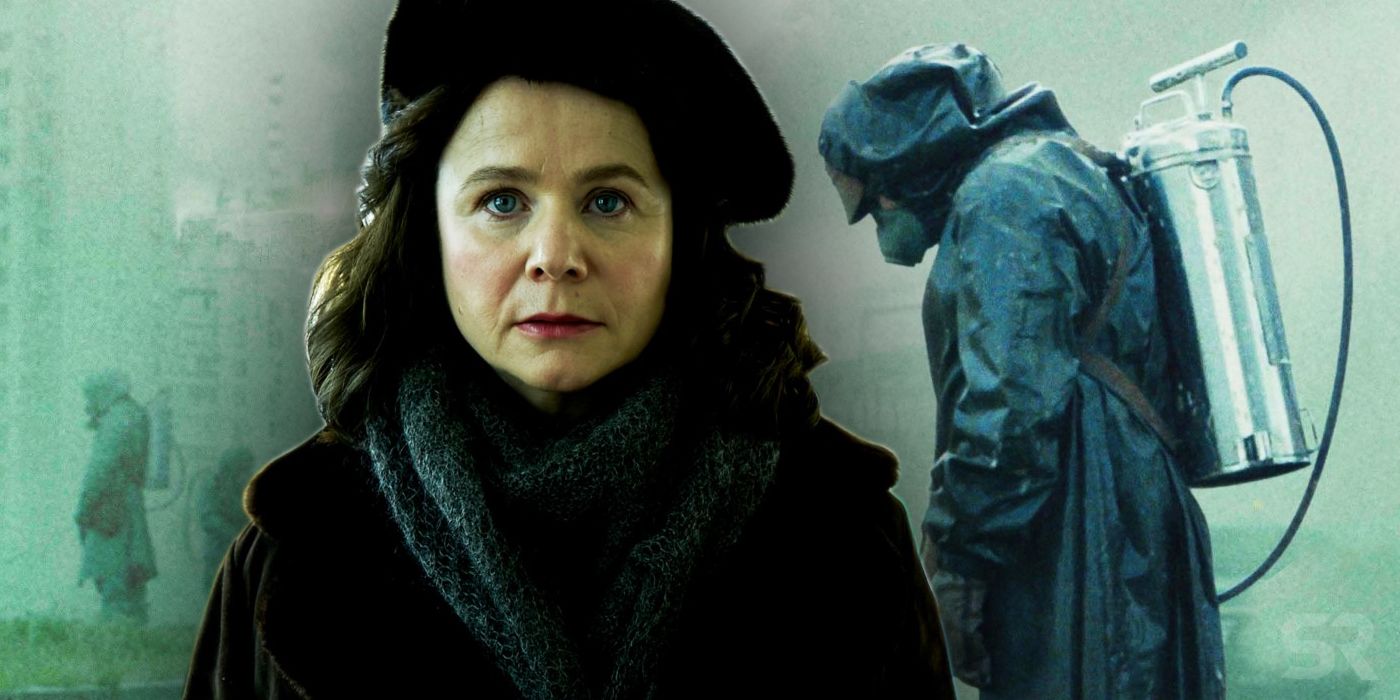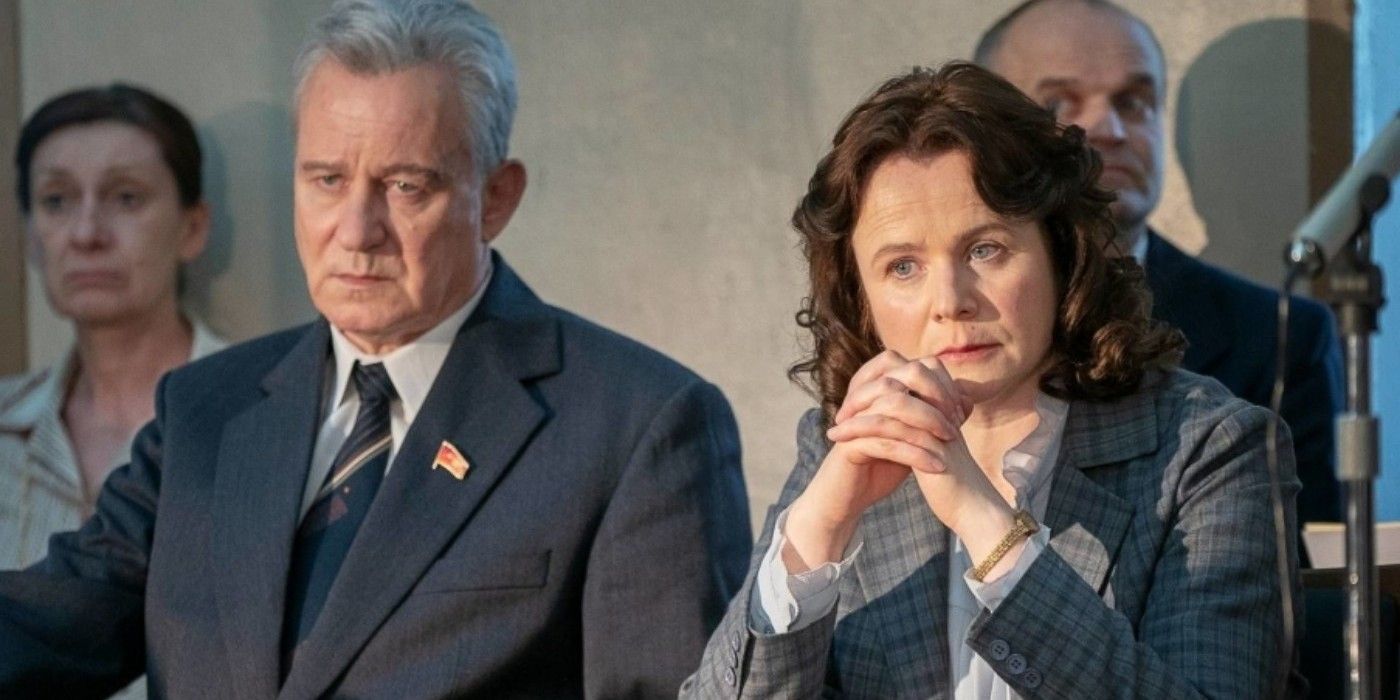Emily Watson's Chernobyl character, Ulana Khomyuk, was entirely fictitious - here's why. HBO's harrowing miniseries has come to an end but the show has left viewers with plenty to mull over. Dealing with what happened in the wake of the 1986 Chernobyl nuclear reactor meltdown, Chernobyl took a closer look at how the Soviet Union handled the disaster, often with cover-ups in the news, bungled clean-up, and a failure to understand just how horrific the implications of a nuclear reactor meltdown would be on the world at large.
Acting as the conscience of the show was the character of Ulana Khomyuk, a Soviet scientist played by Emily Watson and created specifically for Chernobyl. In real life, Soviet chemist and former member of the Academy of Sciences of the USSR, Valery Legasov (played by Jared Harris), worked alongside dozens of scientists and experts to try and clean up the widespread damage done by the Chernobyl disaster. For Chernobyl, the decision was made to combine that team of scientists and experts into one character, Ulana, to better serve the story being told.
Over the course of Chernobyl, viewers watched as Ulana demanded that those responsible for failing to protect citizens of the Soviet Union from the true harm of the radiation emitted by the destroyed Chernobyl reactor be held accountable. She discovers the presence of high levels of radiation at her lab in Minsk, hundred of miles away from the Chernobyl reactor. Upon further digging, she is able to speak with Legasov and earn a seat at the proverbial table to assist in the recovery efforts and, eventually, uncover what happened on that fateful night. This involvement merges several real-life people.
That's not to mean that Ulana's position is entirely fictional. Her role as a nuclear physicist at the Belarusian Institute for Nuclear Energy, which automatically gets her foot in the door, is something Chernobyl screenwriter Craig Mazin wanted to highlight based on historical fact. "One area where the Soviets were actually more progressive than we were was in the area of science and medicine," Mazin told Variety's "TV Take" podcast. "The Soviet Union had quite a large percentage of female doctors."
Speaking with Collider, Watson opened up about interpreting Mazin's creation of Ulana for Chernobyl and going further into what it was like playing a character meant to be a composite of a large team of people.
"[Mazin] brought together the elements that he needed to tell the story. And even if you’re playing somebody who’s real, unless they’re a really famous person, just mimicking somebody for the sake of it doesn’t necessarily serve the story well."
Despite Ulana being a totally fictional character working alongside characters based on the real people who worked to clean up the Chernobyl disaster, Mazin's choice to create Ulana in the first place is one with real narrative benefits. Streamlining the number of characters involved in telling this story and allowing Ulana to function as the pathos of the story helps make Chernobyl the visceral, affecting, and widely-acclaimed miniseries it has become since it wrapped on HBO.


